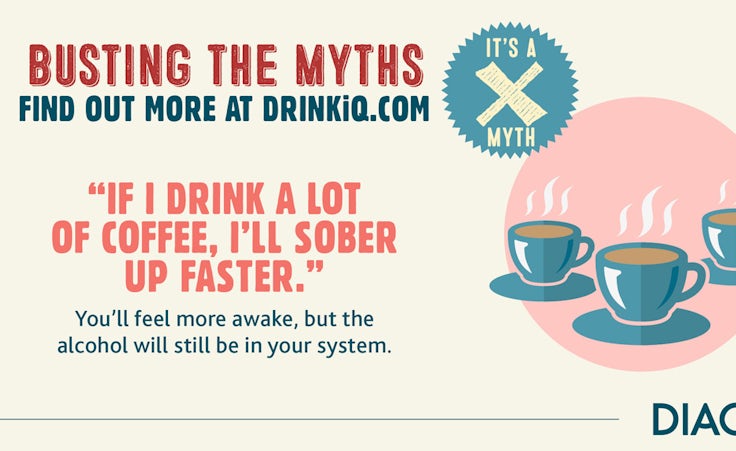Diageo’s marketing boss: Global marketing is about cultural differences and human similarities
Marketers looking to expand their brands globally face the same challenge – achieving cultural relevance while delivering scale, efficiency and shareholder returns.

We humans may all be 99.9% the same in our genetic make-up but our cultural upbringing leads us to laugh at different jokes, eat different food and celebrate different heroes. Culture means different things to different people. It changes constantly, made more dynamic by the digital and connected age. The notion of ‘culture’ can be difficult to comprehend, and harder still to define.
As marketers look to expand their brands to more consumers both within and across borders, the challenge and opportunity is clear: how to make brands culturally relevant while delivering scale, efficiency and shareholder returns. To succeed, brands with global ambitions need to understand the broad similarities of people across the planet, while taking into account differences at a local level, where culture is subjective, changeable and, above all, personal.
Marketers should think about similarities and differences; knowing when to be the same and when to be different and constantly balancing the two. They should have a few core considerations:
Build a strong unifying brand purpose driven by insight and be prepared to execute it differently locally
A brand with a great purpose travels across borders and cultures. There are some fundamental human truths – happiness, love, fear, hopes and dreams – which are the same in every country and give brands the possibility to connect globally. The most successful global brands tap into these truths. For example, Johnnie Walker stands for progress – a universal desire true across cultures which manifests differently depending on where you live. The art is to land your brand’s purpose and create a thread of similarity across everything you do – and then to apply it locally, recognising that different executions may be needed to ensure a message resonates culturally.
Ensure consistency of imagery and visual assets
Brands should look to be consistent through the use of strong brand assets and visual identity across all the cultures in which they operate. In this busy, fast-paced world, consumers do not spend their days decoding our messages but we want our brands in their consciousness. Consistent symbols and imagery allow us to do this. We can all quote the great global brands that are instantly recognisable no matter where you go on your travels. So keep the imagery simple and powerful.
Understand, contextualise and adapt
The need to contextualise is an essential part of marketing in different cultures. Through the use of local talent, influencers, locally-focused occasions and events, brands can earn respect by showing that they understand the local way of being. Small insights can help – such as understanding that in the world of drinks the ‘after-work drink’ can be at vastly different times – so you should tailor your activity accordingly.
Flexibility and agility also play an important role. Culture moves quickly, as trends develop at pace in this tech-enabled world. Fashion brand Burberry is a great example of being true to its core as a brand rooted in British elegance and heritage but which constantly leads digital innovation in the luxury world. Adapting to trends, behaviours and cultural conversations is crucial to remain relevant.
Tribes cross borders
There are brands that are built on one culture, and these can travel extremely well, partly because people are buying into the values and aspirations of that cultural tribe. Many brands link into music because it enables them to tap into a similar-thinking group of people across borders. From electronic dance music to jazz, cohorts exist who can receive the same message with limited tailoring. This brings efficiency for the brand and scale of delivery. Sport can work in the same way, and we all marvel at the phenomenon that is gaming.
When we look to expand the footprint of our brands across the globe, we often say ‘think global, act local’. The art here is to know how you land big messages based on human truths that span cultures and then when to tailor a message to ensure it taps into a localised trend. Seek similarities, but know when to adapt to differences.







Totally agree with you Ed. Many misconceptions are based on what I call the ‘zero-sum fallacy’; marketers set in opposition objectives or criteria that are not, in fact, competing. This mistake means work is seen as either ‘creative’ or ‘effective’; ‘innovative’ or ‘informative’. But by far the most common that I see in my work is to automatically equate centrally created campaigns with compromised local market engagement. Although much harder to develop, there are many ideas that resonate equally powerfully in a range of global cultures, whether from brands such as Dove’s Campaign for Real Beauty, or Volvo’s Epic Split, or pop cultural phenomena like The Simpsons or Who Wants to be a Millionaire?. Ultimately, advertising should aim to drive behavioural change at scale rather than focusing on niche, highly localised propositions. Unfortunately, in order to negotiate the tensions of head office versus local market realpolitik, most brands have set their creative ambitions too low. https://medium.com/next-practice/from-dumb-luck-to-structured-excellence-c33bafb3b507#.mz79vo1u3